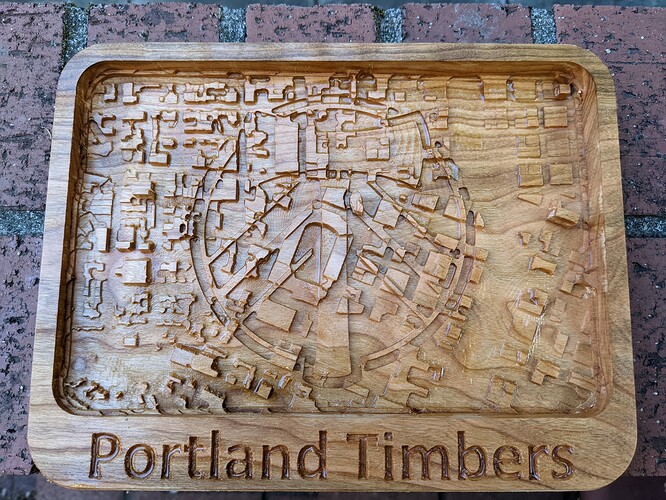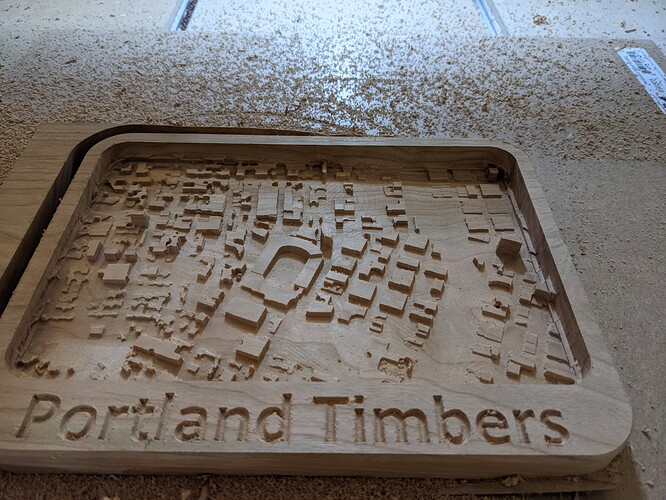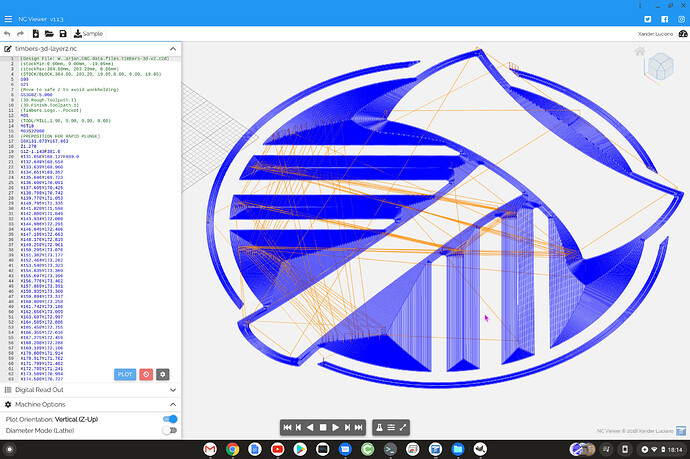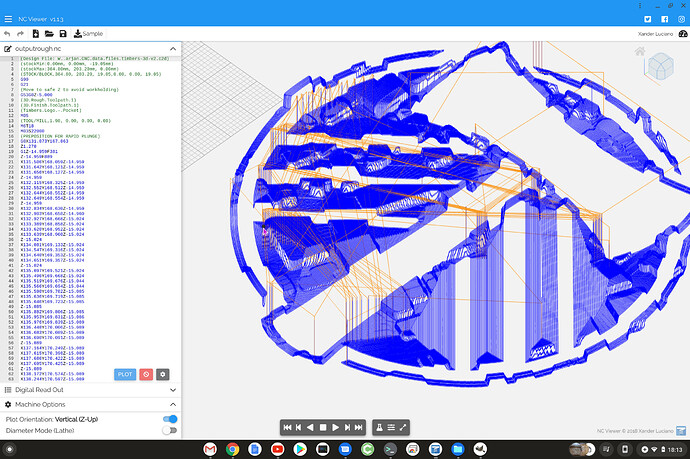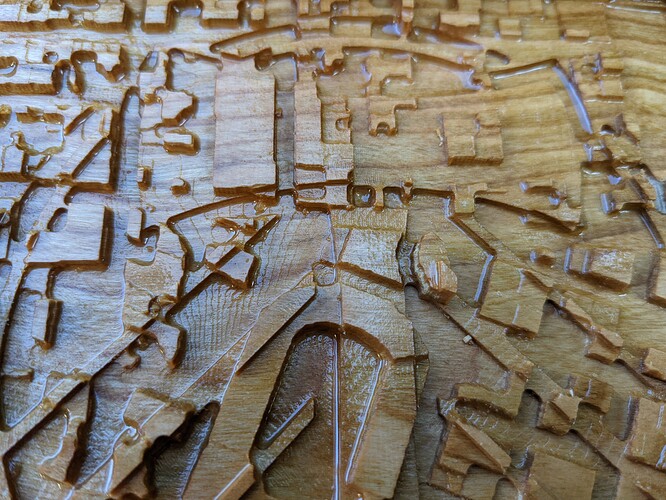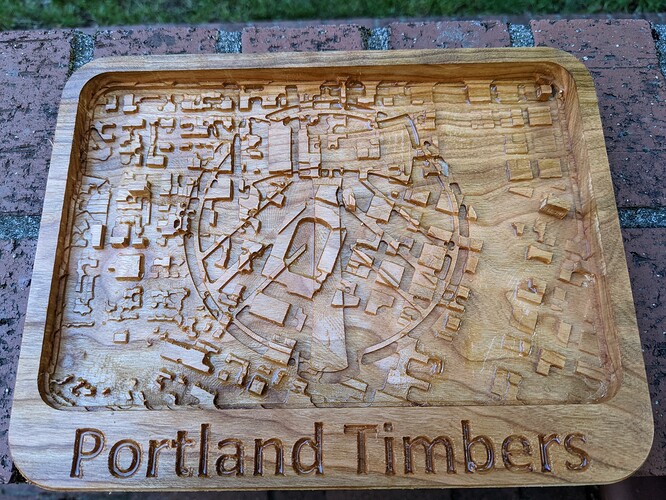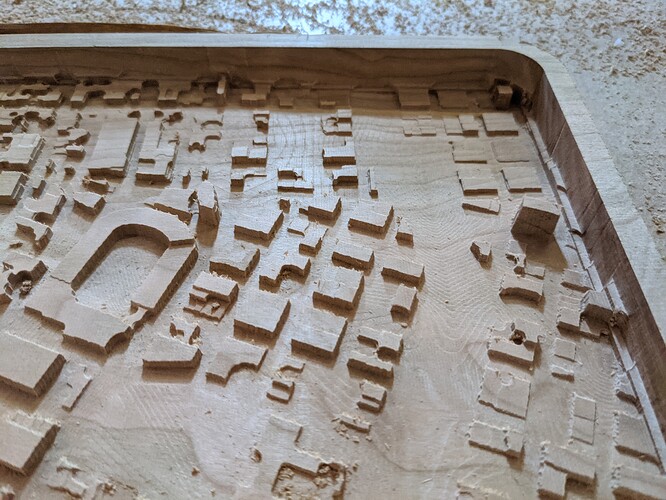In Cutting clean text vectors on a 3d model in CC Pro, @atomicmarmot asked if one could cut normal carbide create (2D) toolpath on top of a 3D model. I pondered that it should be possible and @Julien posed the challange.
The result:
It starts with Blender + GIS plugin, to create an 3D model of the area of interest.
By following the great youtube video at Blender GIS - YouTube one gets an STL pretty quickly.
From STL to Grayscale depthmap for CC Pro is well known by now (STL2NC - javascript edition, tutorial at Cutting STL models with Carbide Create Pro (nearly-2021 edition))
Add a rounded edges, some text and one gets:
(and hey I can see my house on there… Detail came out quite nice even though it was finished with a 2mm flat endmill not a tiny ballnose for cutting time reasons)
But… so far it’s a city scape with stadium, no team logo yet. So on to wikipedia, grab the SVG, in Carbide Create load the SVG and make a 0.06" pocket. Easy peasy.
Except we want this pocket to be layered into the existing model… Julien: Challenge Accepted.
Load the basic gcode (
timbers-3d-layer1.nc (1.9 MB)
) into NCNC2NC - javascript edition, add the gcode for the 2D pocket with the second button (
timbers-3d-layer2.nc (521.1 KB)
) and … out comes a nicely modulated gcode that will cut the logo perfectly into the previously cut design.
This gcode is too large to upload but it looks like this in ncviewer:
some other up pictures:
and the C3D file:
timbers-3d-v2.c2d (1.1 MB)
